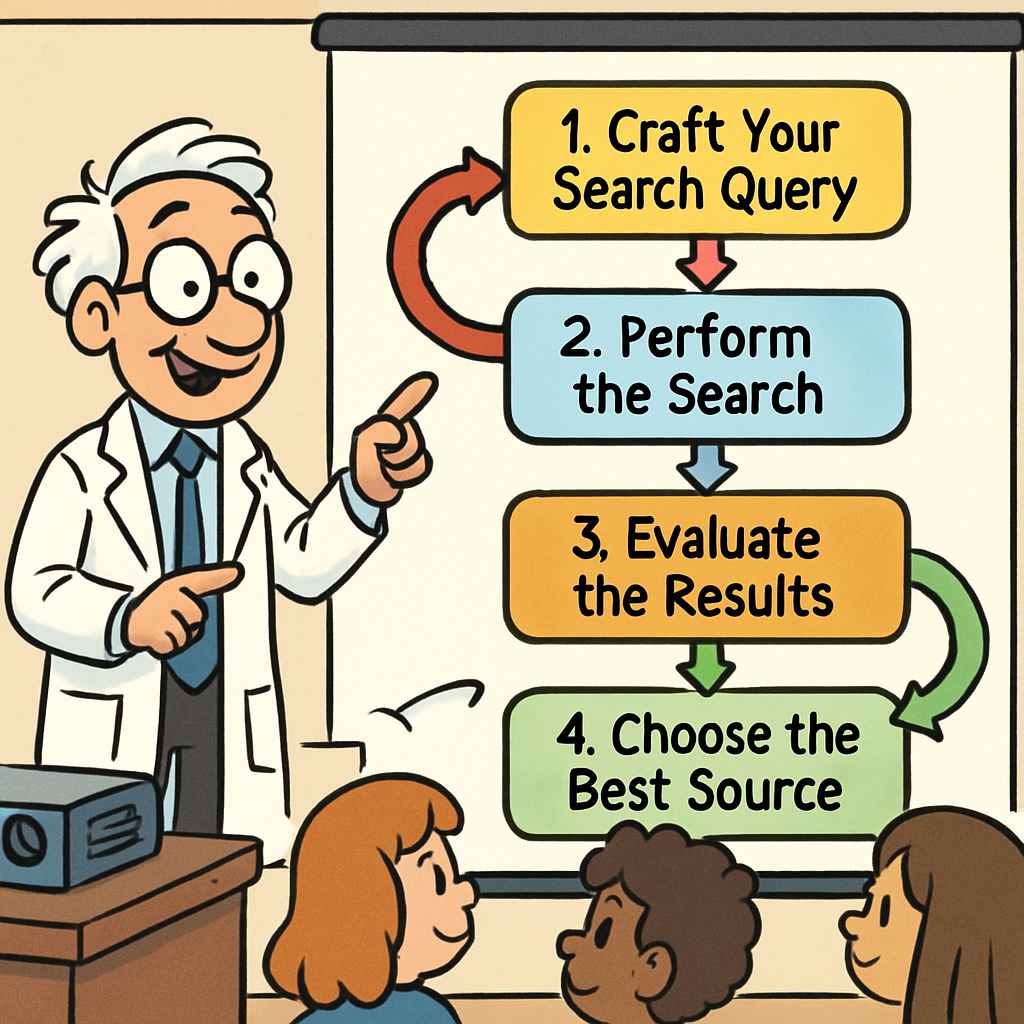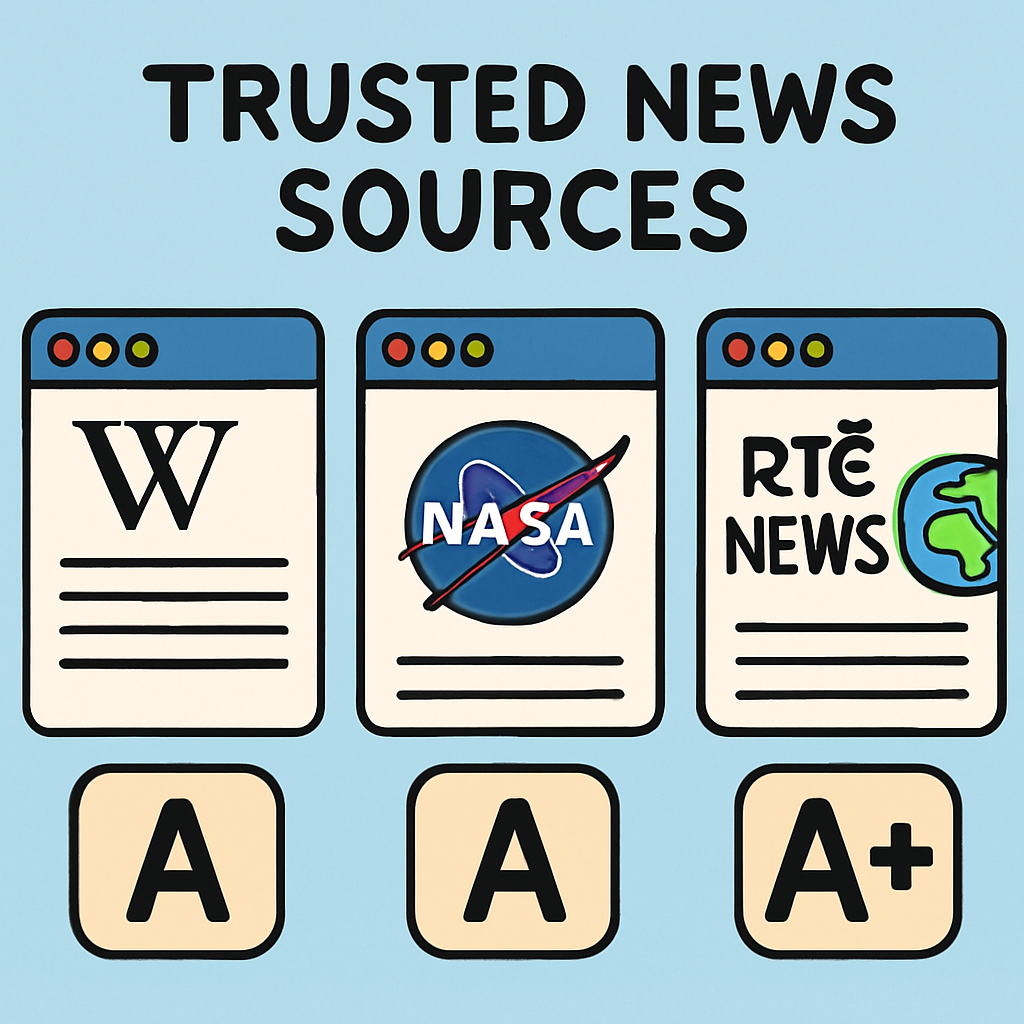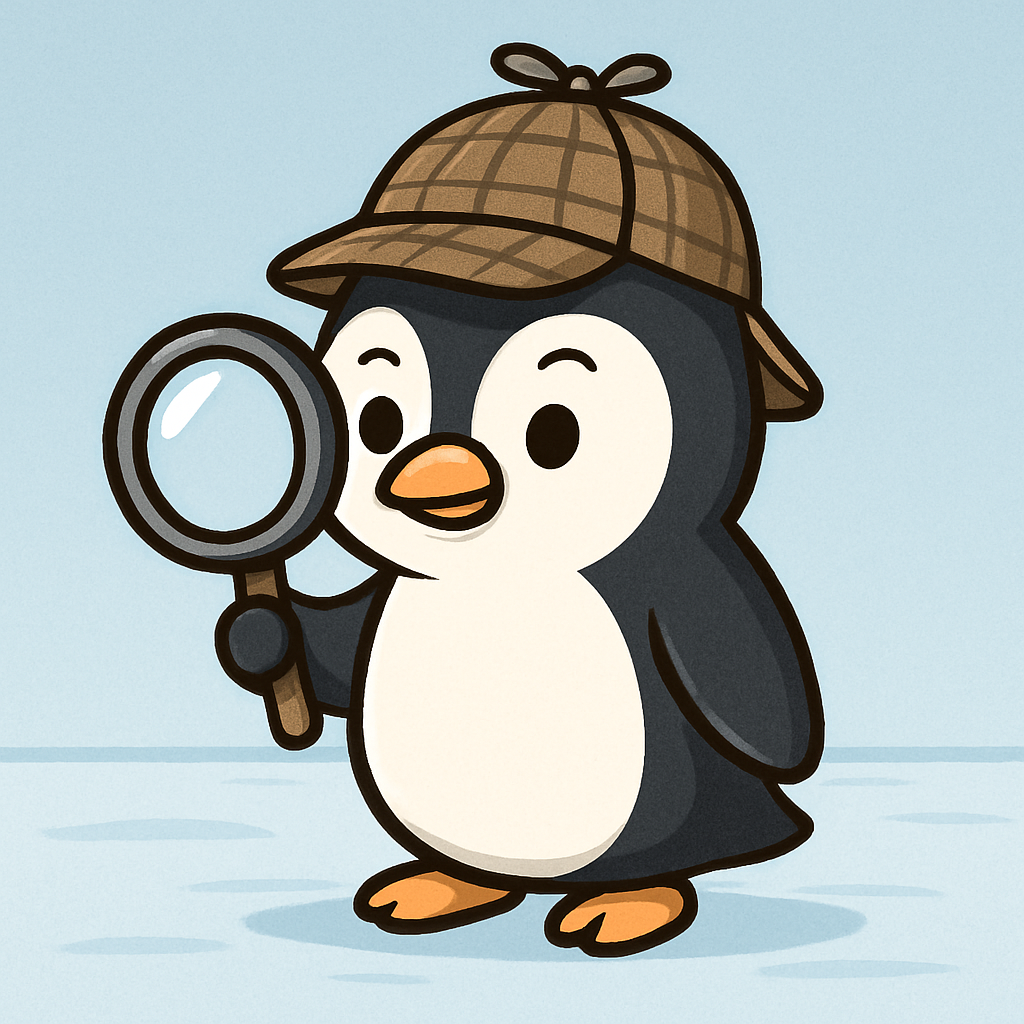 Combining Search Skills for Better Research
Combining Search Skills for Better ResearchIn this lesson, you will learn how to conduct searches and evaluate the results systematically. You'll explore how to begin with a research question, develop a precise search query, review the results, and select the most trustworthy source. These abilities are essential for your school assignments and for navigating information online responsibly.
 In this section, you will explore a full example of how to conduct an online search and evaluate the results. The research question we’ll use is: “Why is sleep important for teenagers?” You will follow each stage step by step, just like you would when researching independently.
In this section, you will explore a full example of how to conduct an online search and evaluate the results. The research question we’ll use is: “Why is sleep important for teenagers?” You will follow each stage step by step, just like you would when researching independently.
The steps below outline a helpful process to guide your research and ensure the information you find is trustworthy. Follow them carefully to build strong digital research habits.
Turn your research question into a focused search query. For example, try: importance of sleep for teenagers site:.gov OR site:.edu. This search uses keywords and limits results to educational or government websites—often reliable sources. You can adjust your keywords to better match what you're looking for.
Use a trusted search engine, like Google, and enter your query. Review the top results. In this example, you might see articles from the HSE, NHS, health.gov, or university health centres. Look at the page titles, short summaries, and website URLs to judge how relevant they are to your question.
Use the evaluation checklist to decide how trustworthy each result is:
Take notes on each result to help you compare and decide which one is best.
Once you've evaluated a few options, pick the one that best meets all of the criteria above. For example, a government health page updated this year with expert-backed content would be a strong choice because it’s both trustworthy and directly relevant to your question.
 Occasionally, you may encounter several sources that appear reliable during your research. Selecting the most suitable one requires a careful comparison. The following tips provide a structured approach to help you evaluate and choose effectively. By applying these strategies, you can ensure your selected source is the most appropriate for your needs.
Occasionally, you may encounter several sources that appear reliable during your research. Selecting the most suitable one requires a careful comparison. The following tips provide a structured approach to help you evaluate and choose effectively. By applying these strategies, you can ensure your selected source is the most appropriate for your needs.
Examine the publication date of each source. For topics that evolve rapidly, such as scientific developments or current events, select the most recent information to ensure accuracy and relevance. Older sources may contain outdated facts, so prioritise those published within the last few years.
Assess the level of detail provided. Opt for sources that offer comprehensive explanations, supported by examples, data, or evidence, rather than brief overviews. A deeper source will provide a more thorough understanding and better support for your research question.
Verify the information by comparing it across multiple sources. If the key facts align consistently, this increases confidence in their accuracy. Discrepancies may indicate errors or biases, prompting further investigation.
Evaluate the nature of the website or organisation. Official government sites (for example, gov.uk) or educational institutions are generally more authoritative than personal blogs or commercial pages, as they are often produced by experts with rigorous standards.
Look for signs of one-sided perspectives, such as exaggerated claims or promotional content. Choose sources that present information in a neutral, balanced manner, drawing on multiple viewpoints to provide a fair representation of the topic.
 In this activity, you will apply the skills you have learned by conducting your own online search and evaluating the results. This exercise will involve formulating a research question, creating a search query, reviewing search results, and selecting the most reliable source based on a structured evaluation.
In this activity, you will apply the skills you have learned by conducting your own online search and evaluating the results. This exercise will involve formulating a research question, creating a search query, reviewing search results, and selecting the most reliable source based on a structured evaluation.
Follow these steps systematically to ensure a thorough and effective research process. Document your findings in a notebook or digital file for future reference.
 Put your search and evaluation skills to the test. Your task is to research a fun topic: What are the most interesting facts about penguins?
Put your search and evaluation skills to the test. Your task is to research a fun topic: What are the most interesting facts about penguins?